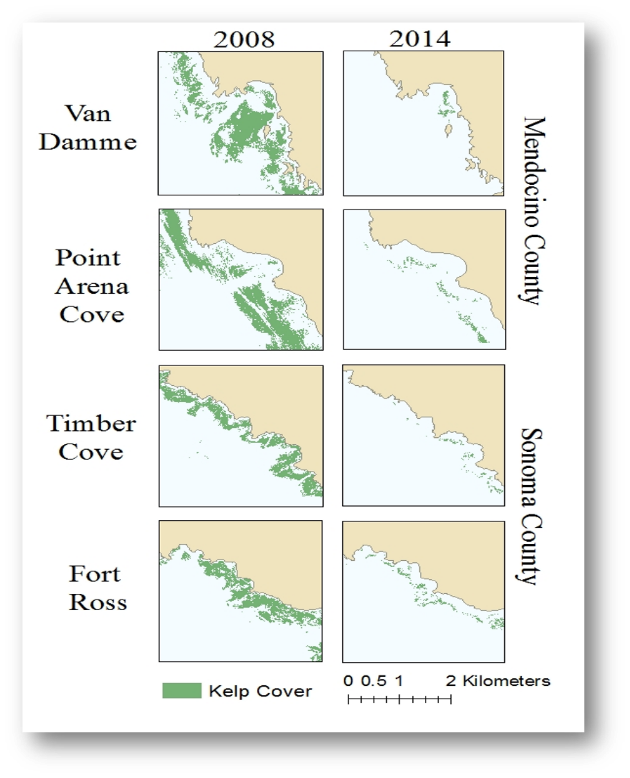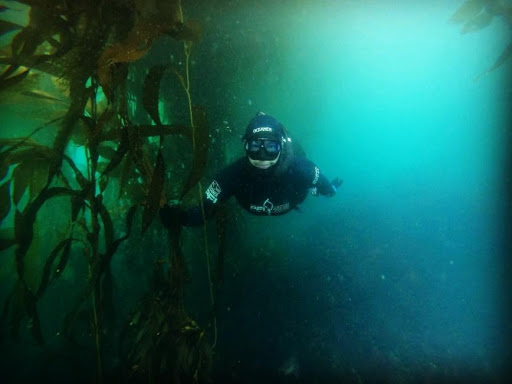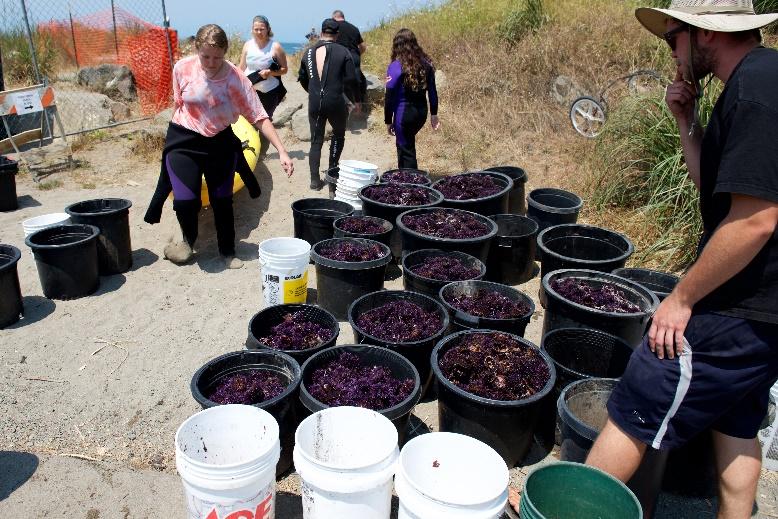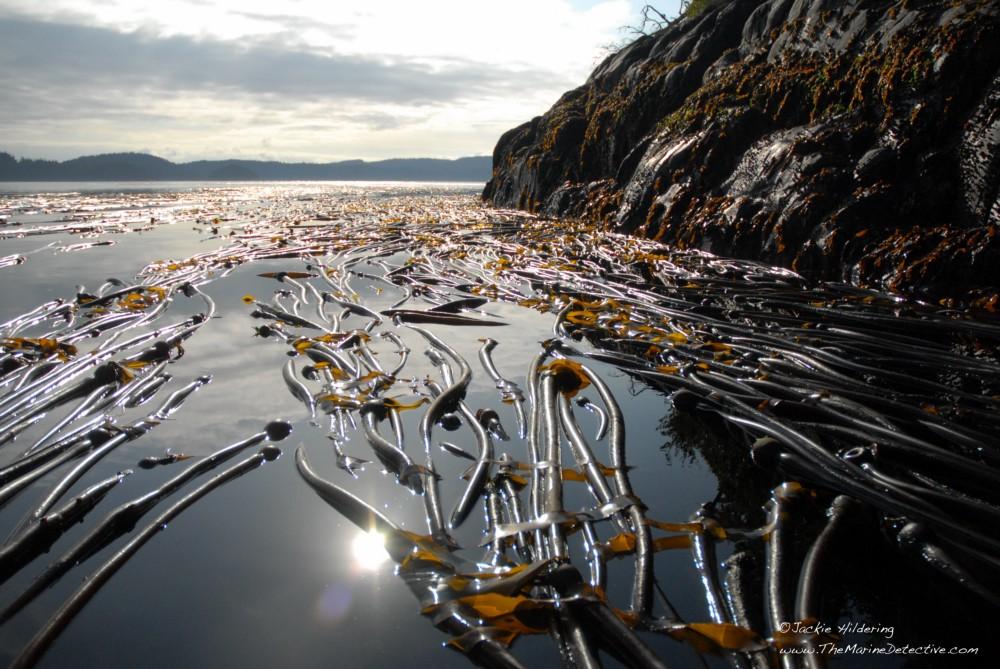Author: Alison Rowe, MAS MBC Candidate ’20
Cover Photo: Jackie Hildering
The towering brown-green seaweed stalks sway back and forth in the water. It’s just dark enough to lose yourself. You’re immersed. Then you get pummeled by a toddler. Back to reality and onto the next aquarium exhibit.
That’s been my sole experience with the kelp forests of Northern California. But how do wild kelp forests compare to those at the aquarium?
It’s a bleak comparison. Instead of a forest moving rhythmically and bustling with colorful creatures, you’d likely find a few bare, chewed-on stalks of kelp anchored to a pink sea floor dotted with purple urchins in the Northern California counties of Sonoma and Mendocino. This devastating reality is the result of a “perfect storm” of environmental stressors. The California Department of Fish and Wildlife reports kelp forests have decreased by 93 percent in these counties since 2012. Currently, unchecked populations of purple urchins are consuming kelp faster than the oceanic forests can recover.

Comparison of kelp cover at four important abalone fishery sites in 2008 and 2014. Green indicates kelp canopy observed. Maps created from data collected during CDFW aerial surveys. (Data: M. Fredle)
This devastation has ecological, economic, and recreational consequences – and it affects one of the most essential elements for life, oxygen. Kelp produces oxygen which supports diverse life in the kelp forest. Without kelp, the delicate balance between oxygen production and oxygen use deteriorates.
Climate change exacerbates the problem. As oceans warm, oxygen levels decrease because warm water holds less oxygen than cooler water. Moreover, kelp does not thrive in warm water environments. Warming oceans have been linked to global decreases in kelp abundance. California coastal areas with sparse kelp coverage and low oxygen concentrations are becoming increasingly more common.
Can the kelp forests be saved? To answer this question, I spoke with Francesca Koe, co-chair of the Kelp Recovery Program, a collaborative, science-based project restoring kelp populations in Northern California.

Francesca Koe diving in a kelp forest (Photo: Anastasia Strebkova)
Francesca developed a deep connection to Northern California’s kelp forests through her love of diving. She describes kelp as the “life blood of an engine that sustains us and myriad species”. Kelp forests provide an important three-dimensional habitat that shelters invertebrates and fishes. Some species aggregate and spawn in kelp forests; others utilize the kelp as juvenile nursery habitat. Large predatory sharks and marine mammals hunt in kelp forests between the kelp stalks.
Additionally, kelp forests have direct socioeconomic impacts on coastal communities, including millions of dollars in fisheries value and ecotourism. According to Francesca, “the ecological, social, and economic impacts are all devastating – [kelp] is a core building block that cannot be replaced. The loss of kelp means marine life dwindles, dies, or relocates which means a loss of fisheries, a loss of income, and a loss of a way of life.”
Thankfully, this is not the end of the story. Teams of optimistic people are working cooperatively to restore the kelp forests. They have mobilized government, tribal, fishing industry, non-profit, and community representatives in comprehensive restoration planning and implementation. Volunteer divers, spearfishermen, and citizen scientists have joined the kelp recovery efforts by removing herbivorous purple urchins from kelp habitat.
While the grassroots group responding to the kelp crisis may seem small, members are dedicated, passionate, and fiercely love Northern California kelp forests. Their love is uniting and contagious. Leaders like Francesca are stewards of the sea who are creating a hold-fast for future generations.

Purple urchins collected by volunteer divers

Volunteers at an urchin removal in Mendocino (Photos: Ethan Applegarth

Francesca Koe holding purple urchins (Photo: F. Koe)

